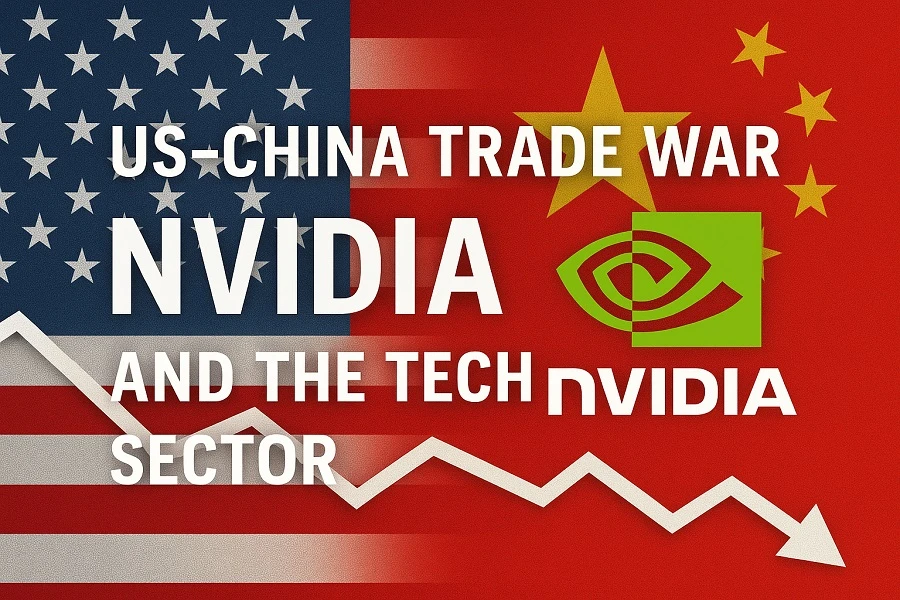Last Updated: October 14, 2025
The AI War: Is Humanity Losing Control?

Across data centers and research labs, around kitchen tables and inside intelligence agencies, a quiet but profound struggle is taking place. This struggle is not over territory or oil, but over algorithms, models and the data that feeds them. Nations, corporations and covert groups are racing to build smarter systems, then to copy, sabotage or weaponize those same systems. The result is a new kind of conflict — an AI war — that raises a stark question: as algorithms grow more powerful, are we still in control?
What We Mean by “AI War”
“AI war” does not mean armies of robots rolling across borders — at least not yet. It describes several overlapping phenomena:
- Accelerated geopolitical competition to develop strategic AI capabilities (defense, intelligence, commerce).
- Espionage and theft of models, datasets and research that accelerate rivals’ progress.
- Digital sabotage and misinformation campaigns that exploit AI to disrupt institutions.
- Market and regulatory battles over control of data, compute, and talent.
Taken together, these actions form a strategic contest about who sets the rules for powerful AI systems and who benefits from them.
Why Algorithms Matter More Than Ever
Algorithms power decision-making systems that touch finance, security, health care, transportation and the media. An advanced model can optimize a supply chain, break a new protein structure, or create highly persuasive disinformation. Ownership and mastery of those algorithms therefore translates directly into economic advantage and strategic leverage.
It used to be that hardware and manufacturing decided competitive edges. Today, raw compute and chips matter, but the decisive assets are the models and the data used to train them. That is why governments and corporations prioritize obtaining both — sometimes by lawful cooperation, and sometimes by espionage.
How Nations Steal Algorithms and Data
Stealing AI capability is different from stealing conventional intellectual property. Techniques include:
- Cyber intrusions: Targeting research labs, cloud accounts, and model checkpoints to copy trained networks or training data.
- Insider recruitment: Hiring or coercing researchers and engineers to leak models, codebases or detailed papers before publication.
- Reverse engineering: Querying public models at scale to reconstruct their weights or replicate behavior (model extraction attacks).
- Data scraping at scale: Harvesting vast amounts of text, images, video and sensor logs — often in gray zones legally — to build competitive datasets.
Public reporting has documented instances where state-linked groups targeted cloud services and research centers to obtain advanced models or proprietary datasets. Even without direct theft, aggressive talent recruitment and academic collaboration can produce rapid transfer of know-how.
Weaponizing AI: From Influence to Infrastructure
AI can be used to improve national capabilities in legitimate ways — logistics, medical diagnostics, climate modeling. But it can also be weaponized:
- Influence operations: AI-generated text, audio and deepfakes scale persuasive disinformation for political ends.
- Automated vulnerability discovery: Machine learning models can find software flaws faster, accelerating cyberattacks.
- Autonomous systems: AI-guided drones or decision aids in military systems raise the risk of unintended escalation.
- Economic manipulation: Algorithmic trading and market optimization can be used to destabilize financial systems.
These capabilities lower the threshold for harmful action by enabling smaller actors to have outsize impact. A well-crafted AI campaign can sway a population, misdirect emergency response, or shut down critical infrastructure without firing a single bullet.
The Talent and Compute Race
A modern AI lab needs three things: data, talent, and compute. Shortages in any area bottleneck progress — and that scarcity fuels competition.
Talent is highly mobile. Countries and companies entice researchers with funding, access to compute, or legal protections. Compute — high-end GPUs and specialized accelerators — has become a geopolitical asset: export controls and chip sanctions are used to deny rivals the hardware needed for frontier models. Meanwhile, access to unique datasets (healthcare records, satellite imagery, transaction logs) acts as a moat.
When export controls restrict hardware, some actors respond by focusing research on more efficient architectures or by building domestic chip industries, which lengthens the strategic competition.
Regulation, Ethics and the Diplomatic Vacuum
One reason the AI war is dangerous is that governance lags capability. International law and norms that apply to weapons and espionage are old and do not directly map to opaque algorithmic systems. Calls for international agreements on AI safety, export controls, and norms of behavior exist, but diplomatic progress has been slow.
Where multilateral frameworks lag, bilateral and unilateral policies arise: export bans, investment screening, and restrictions on academic cooperation. These measures address immediate risks but also fragment research ecosystems, making common standards harder to achieve.
Case Studies: Real-World Flashpoints
Several recent episodes illustrate the dynamics at play (summarized without naming unverified claims):
- Cloud intrusions that exposed model checkpoints and training pipelines, enabling adversaries to replicate capabilities faster than years of independent research would allow.
- Large-scale disinformation campaigns using synthetic media to manipulate public sentiment around elections and public health crises.
- Political pressure on private firms to localize data or alter model behavior to comply with national policies — creating a patchwork of aligned and misaligned systems across borders.
Each event underlines how AI capabilities have strategic consequences beyond corporate profit.
Are AI Systems “Out of Control”?
Two separate concerns get conflated in public debate: (1) loss of control because an individual model behaves unpredictably, and (2) societal loss of control because actors (states, companies) use AI in harmful ways. The first is largely an engineering problem — robustness, interpretability, and monitoring can reduce surprising behavior. The second is political and social: power concentrated in a few hands combined with weak norms can produce outcomes that feel out of control.
In short, AI itself is not mysteriously autonomous; it is an amplifier. If actors with harmful intent have access to advanced models, the consequences can exceed traditional risks.
How Democracies and Autocracies Approach the Problem Differently
Governance models shape how AI is developed and wielded. Democracies tend to emphasize transparency, civil rights, and multistakeholder processes, but they also face legal and political constraints that slow decisive action. Authoritarian systems can push rapid deployment with fewer internal checks — sometimes achieving short-term gains but risking abuses and public backlash.
Both systems have failure modes: lax regulation or oversight allows private misuse; heavy-handed control degrades trust and can stifle innovation. Effective responses likely require combining strong rights protections with agile governance mechanisms.
Pathways to Mitigation and Control
Several practical steps can reduce the most acute risks of an AI war:
- Model provenance and watermarking: Techniques that allow defenders to verify a model’s origin and detect copied or illicitly derived models.
- International norms and targeted treaties: Agreements around the export of training compute, dual-use technologies, and offensive AI capabilities.
- Resilient infrastructure: Hardened critical systems and redundant controls to limit the impact of automated attacks.
- Regulatory clarity for data use: Ensuring that sensitive datasets receive protections akin to medical or financial data.
- Responsible disclosure and red-teaming: Independent assessment of systems to reveal vulnerabilities before abuse.
None of these are silver bullets, but together they reduce asymmetries that fuel covert competition.
What Responsible Corporations Can Do
Private firms hold many levers: they control large datasets, compute resources, and the talent pipeline. Steps companies can adopt include stronger internal controls, limited sharing of high-value models, ethical review boards, and cooperation with governments on safe deployment. At the same time, companies must resist turning into tools of state policy while operating across jurisdictions.
The Human Dimension: Public Awareness and Resilience
Ultimately, democracy and societal resilience matter. A well-informed public, robust civic institutions, media literacy and independent journalism reduce the potency of AI-enabled influence campaigns. Investing in public infrastructure — emergency response, trusted information channels, education — makes societies harder to manipulate.
Conclusion: A New Balance of Power
The AI war is not inevitable — but the conditions that enable it are real: concentrated talent, asymmetrical access to data and compute, and lagging governance. Humanity still has options. Through international cooperation, technical safeguards and civic resilience, it is possible to regain control and ensure AI amplifies human flourishing instead of undermining it.
FAQs
1. Are countries actually stealing AI models?
There are documented incidents of cyber intrusions and illicit copying of research. State-linked cyber groups have targeted intellectual property including AI research and datasets. These events are part of broader intelligence and industrial competition.
2. Can AI systems act on their own and start wars?
Not autonomously in the cinematic sense. AI augments decision-makers and systems; misuse by humans or poorly designed autonomy in military systems could increase risks of escalation. Strong human-in-the-loop safeguards are critical.
3. How can individuals protect their data from being used to train models?
Limit sharing of sensitive personal information online, review app permissions (especially for health and wearable devices), and prefer services with transparent data practices. Advocacy for stronger privacy laws also helps.
4. Will international agreements stop the AI arms race?
Agreements can reduce risks if they are enforceable and include the major players. They can slow offensive deployments and create norms. However, enforcement and verification are challenging and require multilateral cooperation.
5. What is the most urgent policy change needed?
Targeted controls on large-scale compute exports and clearer rules on the commercial use of high-value datasets would address core asymmetries. Simultaneously, investing in model safety research and public resilience is essential.
You May Also Like:

The Hidden Reason Why Cricket Is Losing Young Fans Worldwide...

Navigating the Storm: How the US-China Trade War is Reshaping Nvidia and the Tech Sector...

The Silent War on Undersea Cables: Who Really Controls the Internet’s Backbone?...

